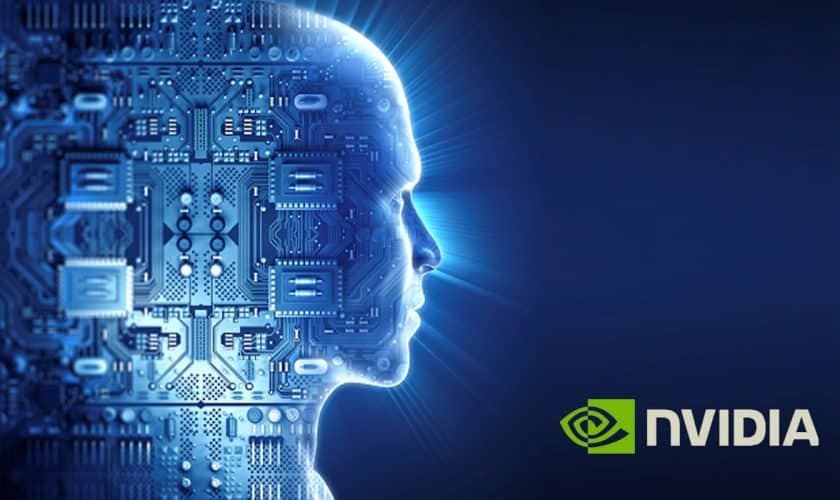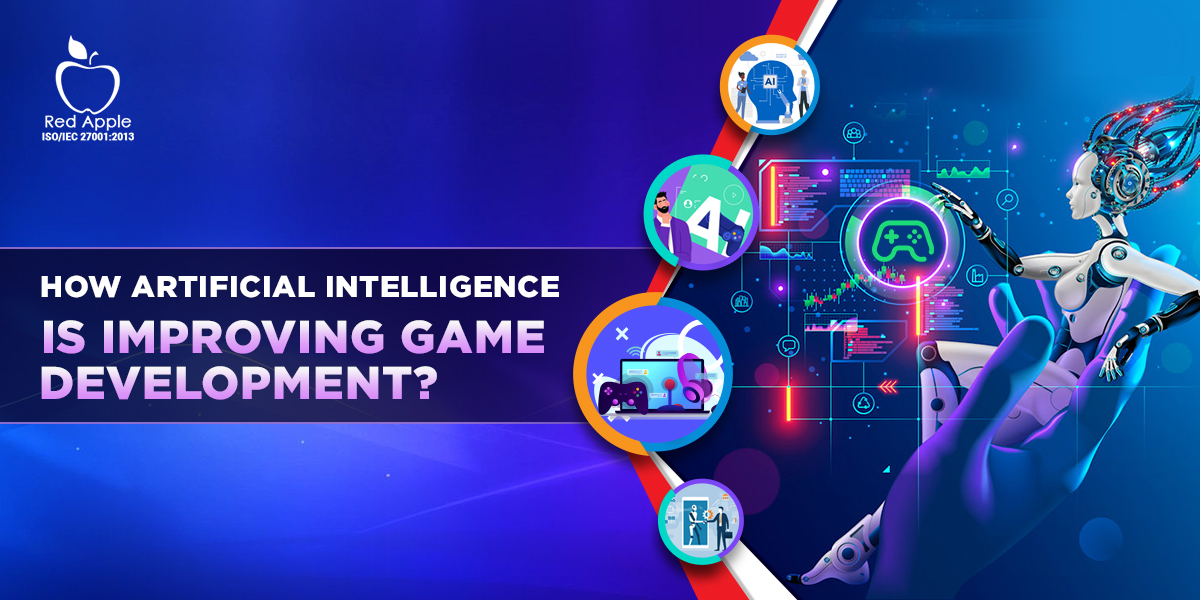
Introduction
With enthusiasm, let’s navigate through the intriguing topic related to Nvidia: The Future of AI and Gaming is Limitless. Let’s weave interesting information and offer fresh perspectives to the readers.
Table of Content
- 1 Introduction
- 2 The Nvidia Empire: A Colossus of Computing
- 3 From Humble Beginnings to Global Dominance
- 3.1 The Rise of the GPU: More Than Just Gaming
- 3.1.1 Parallel Processing: The Secret Sauce
- 3.2 Nvidia’s AI Ecosystem: A Thriving Community
- 3.2.2 CUDA: The Power of Parallel Programming
- 4 The Future is Now: Nvidia’s Expanding Horizons
- 4.3 The Metaverse: A New Frontier for Nvidia
- 4.3.3 Omniverse: Building the Metaverse Brick by Brick
- 4.4 Autonomous Vehicles: The Road to Driverless Futures
- 4.4.4 DRIVE: Powering the Autonomous Revolution
- 5 Challenges and Opportunities
- 5.5 The Competition Heats Up
- 5.5.5 Maintaining the Technological Edge
- 6 Conclusion
- 7 FAQs
- 8 Closure
Nvidia: The Future of AI and Gaming is Limitless
The Nvidia Empire: A Colossus of Computing
Let’s be honest, we’re living in the age of Nvidia. It’s not just hyperbole; their GPUs are the lifeblood of modern gaming, powering breathtaking visuals and immersive experiences. But their influence stretches far beyond pixels and polygons. We’re talking about artificial intelligence, data centers humming with processing power, and a future where the boundaries between the virtual and the real blur. Think about it: the intricate neural networks powering self-driving cars, the sophisticated algorithms behind medical image analysis, even the increasingly realistic digital avatars in your favorite video games – Nvidia’s technology is quietly, yet powerfully, shaping all of these. I remember when I first saw a game rendered with ray tracing – the realism was simply astounding. It felt like stepping into a different world. This is just a glimpse of the potential Nvidia unlocks. But how did they get here, and where are they headed? That’s what we’ll explore in this deep dive into the Nvidia universe.
From Humble Beginnings to Global Dominance
Nvidia’s journey is a classic Silicon Valley success story, full of innovation, risk-taking, and a healthy dose of luck. Starting as a small company focused on graphics processing, they cleverly recognized the potential of their technology far beyond gaming. They saw the burgeoning field of AI and positioned themselves as the leading provider of the hardware necessary to power this technological revolution. This wasn’t just a matter of being in the right place at the right time; it required foresight, strategic investments, and a relentless pursuit of excellence. Remember the early days of clunky, low-resolution graphics? Nvidia’s consistent push for higher performance and better visuals revolutionized the gaming industry, building a loyal customer base that remains with them today. Their success in gaming provided the financial muscle and the technological expertise to expand into other areas, laying the foundation for their current dominance.
The Rise of the GPU: More Than Just Gaming
For a long time, GPUs were seen as specialized chips for gaming. But Nvidia demonstrated that their parallel processing capabilities are perfectly suited for the computationally intensive tasks required by artificial intelligence. This realization was a game-changer. Suddenly, GPUs weren’t just for making games look pretty; they were essential for training complex machine learning models, analyzing massive datasets, and powering the next generation of AI applications. This pivot was a stroke of genius, transforming Nvidia from a gaming company into a technology powerhouse with far-reaching implications.
Parallel Processing: The Secret Sauce
The core of Nvidia’s success lies in their mastery of parallel processing. Unlike traditional CPUs that handle tasks sequentially, GPUs excel at performing many calculations simultaneously. This is crucial for AI, where algorithms often involve processing vast amounts of data in parallel. Think of it like this: a CPU is a single chef meticulously preparing each dish one by one, while a GPU is a team of chefs working together to prepare hundreds of dishes simultaneously. This inherent advantage gives Nvidia a significant edge in the AI race.
Nvidia’s AI Ecosystem: A Thriving Community
Nvidia doesn’t just sell hardware; they’ve cultivated a robust ecosystem around their technology. They provide software tools, development platforms, and a supportive community for developers working on AI applications. This holistic approach has attracted a vast network of researchers, developers, and businesses, fueling innovation and driving adoption of their technology. This ecosystem is a key factor in their ongoing success, fostering collaboration and accelerating the development of AI applications across various industries.
CUDA: The Power of Parallel Programming
CUDA, Nvidia’s parallel computing platform, is a cornerstone of their AI ecosystem. It allows developers to write programs that leverage the parallel processing power of Nvidia GPUs, making it easier to develop and deploy AI applications. CUDA has become a de facto standard in the AI industry, further solidifying Nvidia’s position as a leader in the field. This isn’t just about hardware; it’s about providing the tools and resources necessary for developers to build the future of AI.
The Future is Now: Nvidia’s Expanding Horizons
Nvidia’s ambitions extend far beyond gaming and AI. They’re actively involved in autonomous vehicles, high-performance computing, and even the metaverse. Their technology is being used to develop self-driving cars, power supercomputers for scientific research, and create immersive virtual worlds. This diversification is a strategic move to ensure long-term growth and maintain their position at the forefront of technological innovation. It’s a testament to their forward-thinking approach and their ability to adapt to the ever-changing landscape of the tech industry.
The Metaverse: A New Frontier for Nvidia

The metaverse is a rapidly evolving concept, but it’s clear that powerful graphics processing will be essential to creating truly immersive and realistic virtual worlds. Nvidia is already playing a significant role in this development, providing the hardware and software necessary to power the next generation of metaverse applications. Imagine attending virtual conferences, collaborating on projects in shared virtual spaces, or even experiencing virtual tourism – Nvidia’s technology is making these possibilities a reality.
Omniverse: Building the Metaverse Brick by Brick
Nvidia’s Omniverse platform is a key component of their metaverse strategy. It’s a platform for creating and simulating virtual worlds, allowing developers to build and collaborate on complex 3D environments. Omniverse is not just about gaming; it’s about creating realistic simulations for various industries, from manufacturing and architecture to robotics and healthcare. This platform showcases Nvidia’s commitment to pushing the boundaries of what’s possible in the digital realm.
Autonomous Vehicles: The Road to Driverless Futures
The development of self-driving cars requires immense processing power to analyze sensor data in real-time and make critical decisions. Nvidia’s GPUs are playing a crucial role in this development, providing the computational horsepower necessary for advanced driver-assistance systems (ADAS) and fully autonomous vehicles. This is a high-stakes endeavor, but Nvidia’s technology is helping to make the dream of driverless cars a reality, paving the way for safer and more efficient transportation.
DRIVE: Powering the Autonomous Revolution
Nvidia’s DRIVE platform is specifically designed for autonomous vehicles. It provides a complete hardware and software solution for developing and deploying self-driving systems. DRIVE is being used by leading automotive companies worldwide, highlighting Nvidia’s significant impact on the future of transportation. The implications are vast, from reducing traffic accidents to improving fuel efficiency and optimizing logistics.
Challenges and Opportunities
Despite their dominance, Nvidia faces challenges. Competition is fierce, with other companies vying for a piece of the AI and gaming markets. Maintaining their technological edge requires continuous innovation and significant investments in research and development. Furthermore, the ethical implications of AI are a growing concern, and Nvidia must navigate these complex issues responsibly. However, the opportunities are immense. The continued growth of AI and the expansion of the metaverse present significant growth potential for Nvidia. Their ability to adapt and innovate will be key to capitalizing on these opportunities.
The Competition Heats Up
The semiconductor industry is incredibly competitive, with companies like AMD and Intel constantly striving to catch up. Nvidia needs to stay ahead of the curve by consistently delivering innovative products and maintaining its technological leadership. This requires significant investment in research and development, as well as a keen understanding of market trends and customer needs. It’s a constant race to stay at the forefront of innovation.
Maintaining the Technological Edge
Nvidia’s success hinges on its ability to continuously innovate and push the boundaries of what’s possible. This requires attracting and retaining top talent, investing in cutting-edge research, and fostering a culture of innovation within the company. It’s a constant battle to stay ahead of the competition and meet the ever-evolving demands of the technology industry.
Conclusion
Nvidia’s journey from a gaming company to a global technology leader is a testament to their vision, innovation, and adaptability. Their dominance in GPUs has not only revolutionized gaming but has also become crucial for the advancement of artificial intelligence. The future looks bright, with Nvidia poised to play a pivotal role in shaping the metaverse, autonomous vehicles, and countless other technological advancements. However, the challenges are real, and maintaining their leadership will require continuous innovation, strategic partnerships, and a keen awareness of the ethical implications of their technology. The future of AI and gaming is indeed limitless, and Nvidia is at the forefront, driving this exciting evolution.
As we move forward, it’s crucial to consider the broader societal implications of Nvidia’s technology. The ethical considerations surrounding AI, the potential for job displacement, and the need for responsible innovation must be addressed proactively. Nvidia’s role in shaping this future demands a commitment to responsible development and a focus on using its technology for the betterment of society. The power they wield is immense, and with that power comes a great responsibility.
FAQs
- What is Nvidia’s main competitive advantage? Nvidia’s primary advantage lies in its mastery of parallel processing through its GPUs, which are ideally suited for the computationally intensive tasks of AI and high-performance computing.
- How does Nvidia’s technology impact the gaming industry? Nvidia’s GPUs power the most advanced gaming experiences, enabling stunning visuals, realistic physics, and immersive gameplay.
- What role does Nvidia play in the development of autonomous vehicles? Nvidia provides the hardware and software platforms that power the AI systems used in self-driving cars, enabling real-time data processing and decision-making.
- What is Nvidia Omniverse, and what is its significance? Omniverse is a platform for creating and simulating virtual worlds, crucial for the development of metaverse applications and realistic simulations across various industries.
- What are the ethical considerations surrounding Nvidia’s technology? The ethical implications of AI, including bias in algorithms and potential job displacement, require careful consideration and responsible development practices.
Closure
In conclusion, we hope this article has provided valuable insights into Nvidia: The Future of AI and Gaming is Limitless. We hope you find this article informative and beneficial. See you in our next article!

